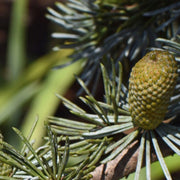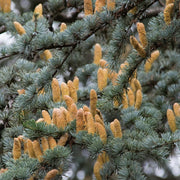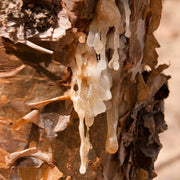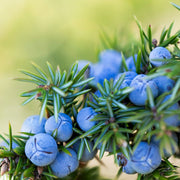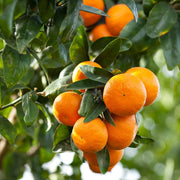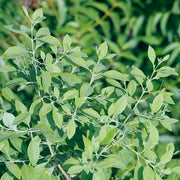Essential Oil Safety for Kids vs. Adults
It goes without saying that kids are smaller than adults! But it sometimes needs to be said that, because they’re smaller, we can use essential oils for kids differently than we do for adults. Their systems tend to be more sensitive and responsive.
A child doesn’t usually need as much essential oil as an adult.
An adult’s essential oil blend for digestion might call for 15 to 18 drops of essential oil in 1 oz (30 ml) of carrier oil. (That’s a 3% dilution.) A child’s essential oil blend for the same issue would only need 5 to 6 drops of essential oil in 1 oz (30 ml) of carrier. (That’s a 1% dilution.)
And some essential oils are simply too strong for children altogether.
They’re full of potent components that can easily irritate children’s sensitive skin, or overwhelm their systems—causing adverse reactions like headaches, sniffles, nausea, skin irritation, and drowsiness. Kids don’t always have the vocabulary to tell us when something isn’t right, so we need to take extra special care with creating essential oil blends for them. Diffusing oils and using kid safe oils are great ways to start to add essential oils to your kid's life.
Top 10 Essential Oils for Kids

These kid safe essential oils are gentle yet effective, even in small amounts. And kids tend to love how they smell!
1. Black Spruce Essential Oil
Latin name: (Picea mariana)
Black spruce oil contains a-pinene, a natural purifying component. It’s also rich in bornyl acetate, which is relaxing. Use black spruce to calm kids down while boosting their immune support.
Black spruce oil's health benefits shine in the Immune Support Lotion.
2. Cedarwood Atlas Essential Oil
Latin name: (Cedrus atlantica)
Full of soothing sesquiterpenes, cedarwood atlas has a familiar, fresh, soft woody smell that can help kids feel safe and secure. It’s also excellent for clearing their breath during cold and flu season (and wonderful during allergy season too!).
Create a calm environment and ease emotional stress with cedarwood atlas oil in the Kids Sweet Dreams Diffuser Blend.
3. Roman Chamomile Essential Oil
Latin name: (Chamaemelum nobile)
Children tend to love the floral, warm-apple smell of Roman chamomile! It helps calm anxious feelings. It’s also rich in esters, which can soothe an upset tummy. Combine with fractionated coconut oil and massage kids’ tummies to ease spasms.
Chamomile (Roman) has a soothing presence in Rumbly Belly Relief Lotion.
4. Frankincense Essential Oil
Latin name: (Boswellia carterii)
Frankincense’s unmistakable aroma helps children center their minds and emotions (not easy when you’re a small person with big feelings!) It’s rich in α-pinene, meaning it supports clear breathing as well as emotional security.
Try frankincense in the Kids Smile Inhaler.
5. Juniper Berry Essential Oil
Latin name: (Juniperus communis)
This fresh, woodsy oil has an invigorating hint of spice in its scent. Like several others in this list, it’s rich in α-pinene. Use it in an aromatherapy diffuser to support kids’ immune strength and encourage healthy breathing.
Juniper berry blends with foresty oils in the Cold & Cough Buster Diffuser Blend.
6. Lavender Essential Oil
Latin name: (Lavandula angustifolia)
A classic oil with a soft floral aroma that makes children smile! Lavender contains linalool and linalyl acetate. It’s gentle, yet powerful enough to instill relaxation, ease nerves, get better sleep, and soothe sensitive skin irritations.
Use lavender oil in the Back to School Calming Inhaler.
7. Lime Essential Oil
Latin name: (Citrus aurantifolia)
Bright, citrusy lime oil smells just like a piece of bright green lime candy! It contains d-limonene, which has been shown to boost the mood. d-Limonene also soothes sore, achy issues (including tummy aches)!
Lime adds its bright, cheery scent to the Muscle Strains Oil.
*Safety Note:
Lime essential oil that’s been produced by cold pressing is phototoxic. This means it can cause negative skin reactions if it’s applied to the child's skin, and that skin is then exposed to direct sunlight (or a tanning bed).
Learn which other essential oils are phototoxic.
However, DISTILLED lime oil is NOT phototoxic. All of our lime oil here at Aromatics has been produced by steam distillation, so you don’t have to worry about phototoxicity when using it (for children ages 1 - 100 :) ).
If your lime oil is supplied by another company, please make sure you know how it was produced! Check their website or email their team for the information to prevent negative reactions.
8. Sweet Orange Essential Oil
Latin name: (Citrus sinensis)
Just like lime, sweet orange oil is rich in d-limonene. Kids love its familiar, fruity scent, and it helps them stay smiling even during emotionally difficult days. Depending on how it’s used, orange (sweet) can calm kids down or perk up their energy.
Use Orange (Sweet) Oil in the Energizing Citrus Diffuser Blend.
9. Sandalwood Essential Oil
Latin name: (Santalum album)
Soft, sweet, and woody, sandalwood essential oil contains soothing sesquiterpenols that can ease the nervous system, support better sleep, and calm spasms. Try adding a few drops to lotion when kids are coughing at night!
Add Sandalwood Oil to an essential oil diffuser in the Kids Cold & Flu Diffuser Blend.
10. Tea Tree Essential Oil
Latin name: (Melaleuca alternifolia)
A famous purifying oil, tea tree is brimming with terpinen-4-ol—a molecule proven to reduce the presence of harmful microbes. It’s gentle enough for little itchy feet and toes, and strong enough to clean surfaces that kids touch a lot.
Tea tree has a purifying effect, and will fight germs in the Kids Go Away Dirt Hand Gel.
These child healthy essential oils are useful year round!

But kids may need extra support during specific times, such as when school starts back up in the fall. During that time, children deal with big adjustments to their schedules, new environments, additional responsibilities, and more.
Aromatherapy oils are a great alternative to harsh chemicals.
Learn 5 Ways essential oils help kids adjust to back to school
Questions about using essential oils for children? Ask in the comments! We’re here to help you use natural essential oils safely and effectively for your entire family.







